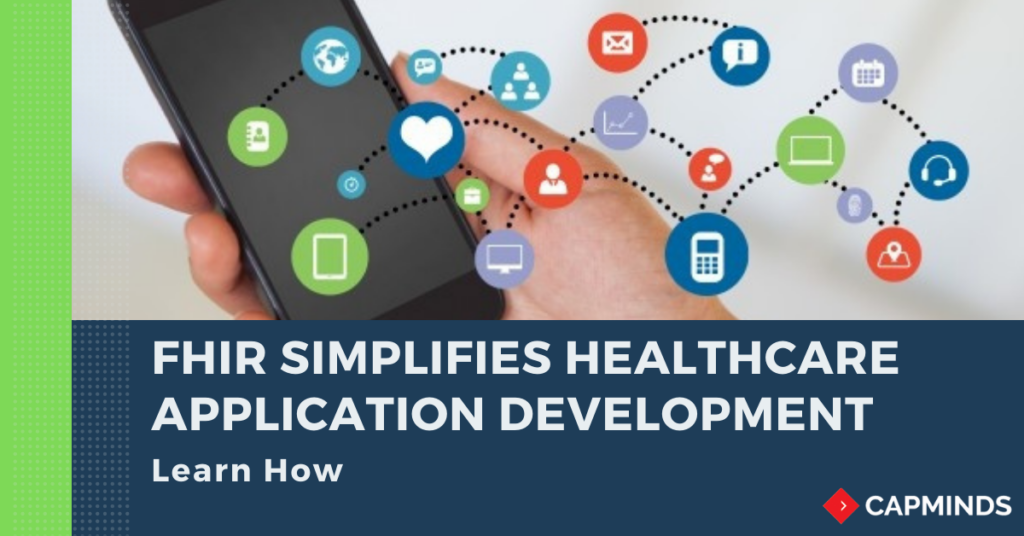FHIR Simplifies Healthcare Application Development
In today’s technological world, healthcare organizations have a lot of choices to make when developing solutions with regards to interoperability, technology stacks, HIPAA compliance, integration, and data management. Fast Healthcare Interoperability Resources (FHIR) is an innovative technology in the healthcare industry today.
What Is FHIR?
FHIR is an open standard that has gained widespread industry recognition and support for its potential to make interoperability a reality in healthcare. It allows clinical applications to access patient data outside of the EHR while remaining standards-compliant. FHIR does not impose any limits on the development practices you use and offers many benefits for data management and interoperability. Here’s is what you need to know about why healthcare organizations should use FHIR and how using FHIR simplifies the healthcare application development process and enables interoperability.
Why FHIR Is Important In Healthcare Application Development?
Managing population health in a value-based system is a challenge for any healthcare organization. No single digital healthcare solution can address this challenge alone, and there is a growing need to support an ecosystem of connected, interoperable healthcare applications.
Such an ecosystem was hardly imaginable a few years ago because of the lack of an interoperability standard recognized by the industry. Nowadays there is a clear winner among standards – Fast Healthcare Interoperability Resources (FHIR) – and many vendors and provider organizations have already started their journeys to the new world of digital health platforms, open APIs, and application marketplaces.
Choosing FHIR for your next health care project could be the most important choice in making your solution future-proof and ready for the next-generation health information ecosystem where data flows seamlessly between EHRs, patient-facing mobile apps, and medical devices.
RELATED: 7 PROVEN REASONS THAT SHOWS YOU WHY FHIR IS BETTER
Working With A FHIR Backend
At the point when you build up your solution on top of an FHIR backend, numerous things will remain the same. Working with an FHIR backend doesn’t change your development cycle. You have to finish the three phases which include;
- Project discovery phase
- Formulate a project vision
- A beginning scope
You can keep on utilizing your #1 Agile Practices, Test Driven Development, DevOps, and Continuous Integration. FHIR won’t disturb you with any limitations on your cycles.
Utilizing an FHIR backend likewise doesn’t influence the decision of your technology stack. It doesn’t matter whether you prefer Java, Ruby, .NET you will find open source libraries that support your technology of choice. You will utilize REST APIs for working with your backend yet FHIR won’t make any boundaries for you to keep utilizing your number one tech stack.
The moment when you start working with data is when the first significant difference comes in. If you are developing your solution from scratch, you must design data models and structures to store your data. But with FHIR, all you have to do is to find the right fit for your data in the open FHIR data models. It may initially be a challenge for engineers who have no previous FHIR or healthcare IT experience, but they will catch up very quickly as FHIR is well documented and easy to learn.
Mapping Your Data To FHIR
Let’s imagine that you are recording information about patient diagnoses. If you are using an FHIR server as your backend you will need to learn how FHIR represents patient diagnoses. You will learn that FHIR calls diagnoses ‘conditions’ and will find a description of the condition resource in the FHIR specification. You might not need all the fields of the condition resource and as you might already know, almost no fields are mandatory.
Begin by choosing the fields you need and document the mapping you got. After that, you are ready to store and manipulate data about diagnoses in your FHIR backend.
Integrating FHIR With EHR Systems
Integration of your FHIR-based solution with EHRs is a lot simpler than it is for a custom solution. If you are building up a SMART on FHIR application, you’ll be getting Electronic Health Records information in the FHIR format immediately. Also, putting away that EHR information to your FHIR backend won’t need any extra effort on your end. SMART on FHIR is getting more popular nowadays and it is supported by numerous EHR vendors.
There are several advantages to combining SMART and FHIR. The combination has the potential to integrate several health applications into the EHR. Moreover, FHIR meets the Meaningful Use Stage 3 guidelines, requiring consistency with patient requests to connect their preferred health app to the EHR.
CapMinds For HL7 FHIR Services
At CapMinds, the best healthcare integration experts provide our clients with world-class HL7 FHIR integration service and support ranging from implementing to hosting and managing your organization’s full healthcare integration.




